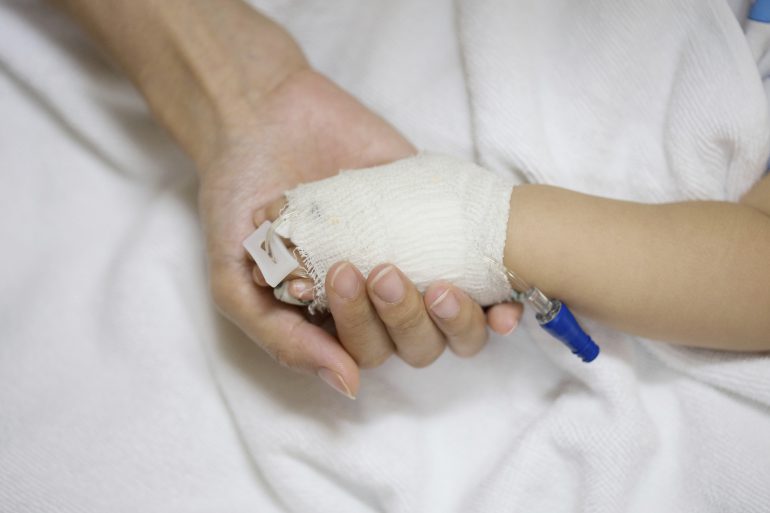Although advances in medicine are saving more children diagnosed with cancer, new research suggests some lingering health problems in adulthood are growing with each generation of survivors.
In a study published Monday by the Annals of Internal Medicine, adults diagnosed with childhood cancers in the 1990s reported some worse health outcomes than those treated in the 1970s or 1980s. Improvements in treatments have led to reduced risk of cancer-related deaths later in life and declines in exposure to radiation and chemotherapy, which can lead to health problems. Yet rates of self-described poor general health, anxiety and pain peaked among the group of survivors who were diagnosed more recently. And the differences were greatest in patients affected by the most common childhood cancers.
The findings surprised the researchers, said the study’s lead author, Kirsten Ness, a faculty member at St. Jude Children’s Research Hospital. They assumed the effectiveness of modern health therapies in curing childhood cancer meant fewer side effects. But the latest data reveals a need for treatment beyond remission.
“Our work isn’t done yet,” Ness said. “Now that cure is achievable for over 80 percent of children with cancer, now our focus has to be getting a durable cure with the least amount of toxicity so that these adults … can achieve whatever they want to achieve.”
According to the study, nearly 14 percent of patients diagnosed with childhood cancer in the 1990s reported general poor health, compared to just 11 percent of individuals diagnosed in the 1970s. The prevalence of cancer-associated pain was also highest among the most recent cohort. And they also led in rates of psychological distress. Nearly 18 percent of the youngest generation reported poor mental health while 15 percent said they suffered from cancer-related anxiety.
Researchers surveyed 14,566 adults who survived more than five years after their cancer diagnosis and are part of the national Childhood Cancer Survivor Study. Participants answered questions about key health indicators like chronic pain and functional impairment, as well as risky habits such as smoking and alcohol use. Several thousand siblings were also included in the study as a comparison.
Five-year survival rates have risen from 50 percent of children and teens in 1975 to 80 percent in 2010, according to the National Cancer Institute. That is partly because chronic diseases caused by treatment are declining among these patients. The study showed that a third of participants diagnosed with childhood cancer in the 1970s sustained serious chronic health conditions such as congestive heart failure, infertility and paralysis after their treatment. That percentage fell among patients with cancer in the 1980s to 26 percent. It fell again among the generation of children with cancer in the 1990s; 21 percent of them live with a chronic condition.
Chronic disease and other side effects are becoming more rare because of better tailored therapies for some patients, the study said. Patients with osteosarcoma, a bone cancer, now receive titanium replacements instead of amputation, Ness explained. And leukemia patients no longer receive cranial radiation as a routine course of treatment, reducing harm on the developing brain.
Ness said much of the innovation in cancer treatment does not involve making new drugs, but finding new ways to deliver treatments with as little damage as possible.
“Durable cure with less toxicity is always the goal,” she said.
Researchers point to several reasons why the patients from the 1990s are suffering the most. Technological advances enable doctors to save children today that would have died several decades ago and those patients may have worse health outcomes. Also, children have better access to earlier screenings and better disease management. That has reduced deaths but may not have reduced fears among patients or made them feel better about their health. Constant medical attention could negatively affect patients’ perceptions of their overall health. In addition, those who more recently were treated for cancer may have had more access to information about their disease and the effects cancer or the treatment will have on them as they age, which could lead to more adverse reporting from patients.
Among all patients, the largest generational disparities in health outcomes, the researchers found, were among survivors of acute lymphoblastic leukemia, known as ALL. The disease causes the bone marrow to make immature white blood cells. It is the most common cancer among children. It also has one of the highest cure rates — about 90 percent, according to St. Jude’s.
The rate of poor general health among these survivors jumped more than 4 percentage points from the 1970s to the 1990s groups. Between the same groups, anxiety rose by 5 percentage points and the percentage reporting pain nearly doubled.
Yet the highly effective current treatment for acute lymphoblastic leukemia makes innovation more difficult, said Nita Seibel, head of the pediatric solid tumor therapeutics at the National Cancer Institute who was not involved with the study. Research becomes more focused on tailoring treatment to the patient rather than broad-sweeping changes in the course of treatment.
In addition, emerging therapies are causing new adverse side effects that will require medical vigilance, Seibel said. Immunotherapies used to treat rare cancers like neuroblastoma, a cancer of the nerve cells in infants and young children, are causing autoimmune reactions, she said. Treatments with monoclonal antibodies are also causing acute conditions. Because these treatments are new, patients will likely need to see a doctor with more frequency for the rest of their lives.
“Even though a child or teenager has cancer and they’re cured of it,” Seibel said, “things don’t stop there.”







